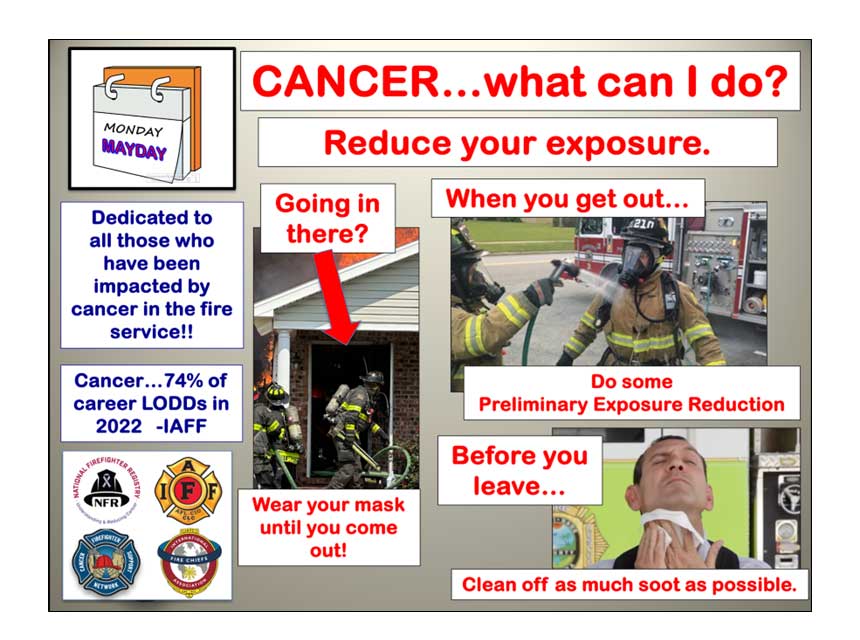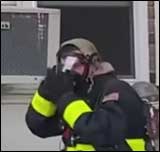
Mayday Monday is a firefighter survival campaign dedicated to helping firefighters survive the fireground. For years, we have focused on personal skills used to overcome hazards found in fires and team techniques to rescue trapped members. As the campaign continued, friends were impacted by other killers, mainly cardiac issues. Mayday Monday added heart health to the mission. Well, another firefighter killer has hit home.

Cancer has eclipsed heart attack, or cardiac issues, as the #1 killer of firefighters. Like heart attacks, flashovers, and the collapse of buildings, there are steps we can take to reduce our exposure and help to keep it away from us. There are many fire service organizations that are working on this issue.
- How Can We Kill the ‘Toxic Snake’ of Cancer?
- FDIC International 2024: No One Fights Alone
- APS Radio: Dr Kenny Fent on NFR
- Taking Time
Here are a few links to information you should check out:
| Fire service organizations working on the cancer killer | |
| NIOSH: National Firefighter Registry | IAFF |
| Firefighter Cancer Support Network | IAFC |

There is a lot we can do to address the cancer problem. There are steps to take before the fire in the firehouse. Steps we can take in preparation for fighting the fire. Steps to take at the scene before we leave. And steps to take after the fire. Mayday Monday will highlight steps to take at the scene of the fire.
- Are you going inside the burning building? Wear your mask with your self-contained breathing apparatus in service, period. From start to finish. Over the years, there have been debates about meter readings and gases to monitor. To keep it simple, if you are inside or on the building, wear your mask and breath off the bottle.
- When you come out of the building, perform some preliminary exposure reduction (PER) to address the contaminated turnout gear and personal protective equipment (PPE). PER is a term introduced in NFPA 1851 and better describes this initial step in the total cleaning of the protective ensemble. On-scene PER does not decontaminate the gear but does reduce our exposure to the cancer-causing elements found on our gear after the firefight. Wet soap PER can reduce the contamination by 85%.
- As soon as possible after taking off your PPE, wipe off as much soot as possible by using wipes. Focus on the head, neck, jaw, throat, underarms and hands immediately. Stay away from baby wipes as those contain moisturizers.
It will be very difficult for us to totally eliminate exposure to cancer-causing chemicals while engaging in firefighting activities. We here at Mayday Monday will provide tips and techniques to help reduce the exposure and to survive the fireground. This month’s skill/drill is to practice PER. Setup the area to hose off and scrub the contaminated turnout gear of a firefighter that just exited the IDLH of a fire. Remember, this first step of turnout gear cleaning can eliminate 85% of the contamination. GO PRACTICE!
Listen to this month’s podcast to hear from Tony and Mike Ciampo about their battle with this fire service problem.
Tony Carroll is deputy chief of operations with the Louisa County (VA) Fire & EMS Department.

